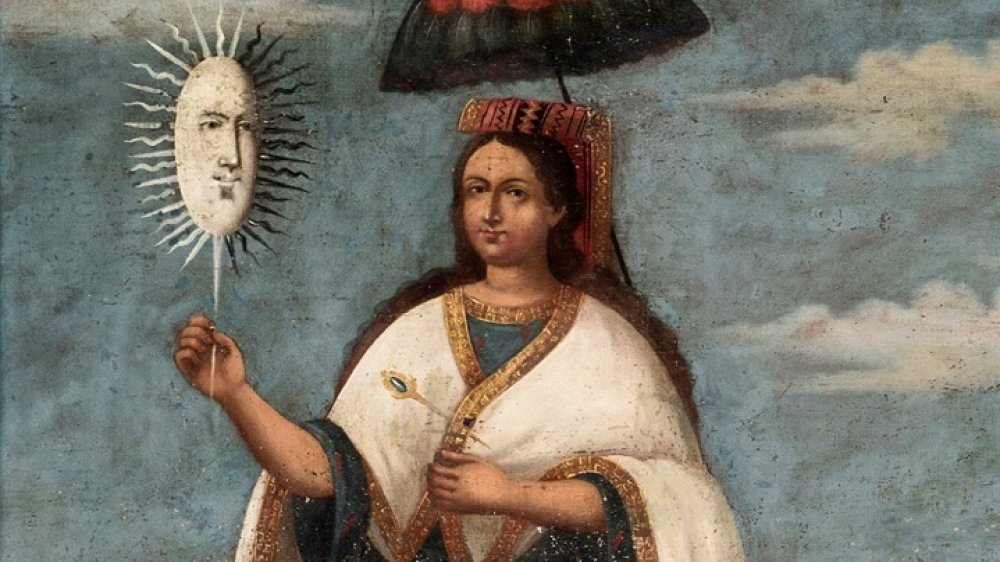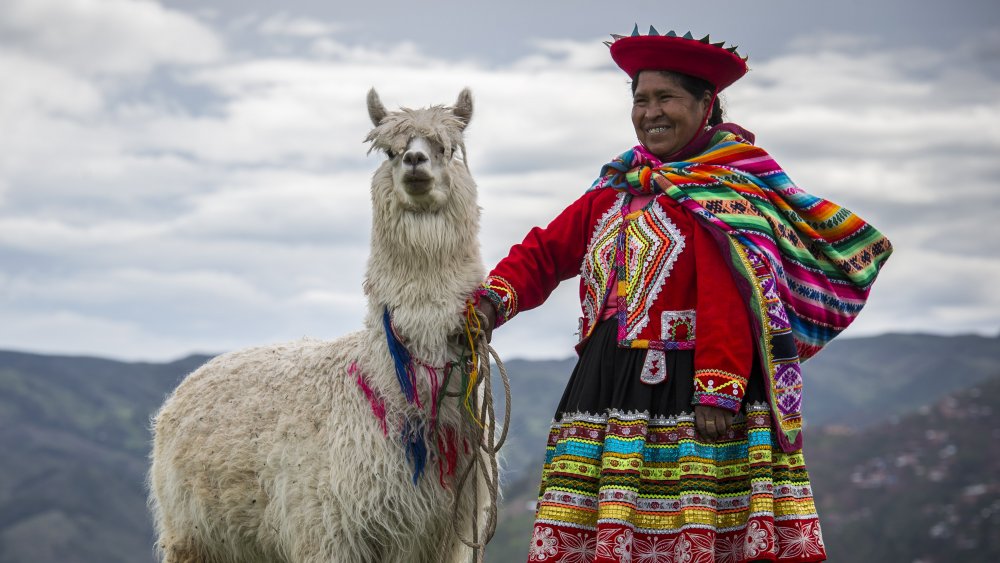What Life Was Like For Women In The Inca Empire
The Incan empire quickly grew during the 16th century CE to encompass nearly the entire western coast of South America, from the southern area of modern-day Chile and Argentina in the south, up through Bolivia, all the way to the western tip of Colombia, per Ancient. The empire's heart was located in Peru in the capitol of Cuzco, and found ways to thrive in the peaks of the Andes mountains, through ingenuous terraced cities and mountaintop architecture such as that found in Machu Picchu. Prior to the fall of the empire in 1633 CE vis-a-vis the capture of king Atahualpa by the Spanish conquistador Pizarro (and his subsequent execution despite having his ransom paid), the Incan empire followed an hierarchical, prescribed lifestyle. Villages and tribes were scooped up, integrated into the empire, and taxes were paid in the form of foodstuffs, textiles, metals, etc., through a regimented, tiered system of 80 governors.
Within this highly prescribed governmental structure, women often played the role of local nobles called kurakas. Small municipalities were referred to as ayllu, a collection of individual households, which were ruled by kurakas, through whom tribute flowed. This kind of stacked hierarchy flowed all the way up to the king, for whom particularly talented weavers, such as those of the Chan Chan or Titicaca region, crafted their wares (within uniform, allowable Incan style guidelines). Some of these women lived in temples under vows of chastity, aiding with religious rituals much like Catholic nuns, all within the watchful eyes of a local matron dubbed Mama Cuna. Many of these women became either concubines for royalty, or sacrifices for the gods, as described in Britannica.
Hunters, gatherers, mothers, daughters
For those women in the Incan empire confined by neither gods nor aristocracy, the family sphere defined nearly their entire lives. Puberty was the great demarcation of Incan life, and once a woman reached such an age, she had a feast in her honor and was given a name to her by her eldest uncle, as described in Ancient. It's interesting to note that Incans had no surnames, only first names that operated more or less like nicknames, as the entire civilization regarded itself as one giant family having originated with the creator god Viracocha arriving in Lake Titicaca from the Pacific Ocean
Predictably, women were expected to marry in their teens, although for non-nobles the choice was largely up to them. They simply consulted with their parents, came to a mutual agreement, and the marriage was more or less done (dependent on a gift of coca leaves). Women would move in with their husbands and immediately begin working at his family's house, while half of the property she gained from the marriage went back to the local ayllu. Birth control wasn't practiced in Incan society, neither was infanticide, and neither sex was discriminated against at birth.
Whoever was born, they were more or less of equal standing, because both sexes contributed to manual labor, hunting, fishing, and agriculture, even while pregnant. The only real difference between men and women came during wartime, when men were called away. On the other side, women were expected to raise children and cook meals. Once a woman gave birth, the cycle simply repeated.

